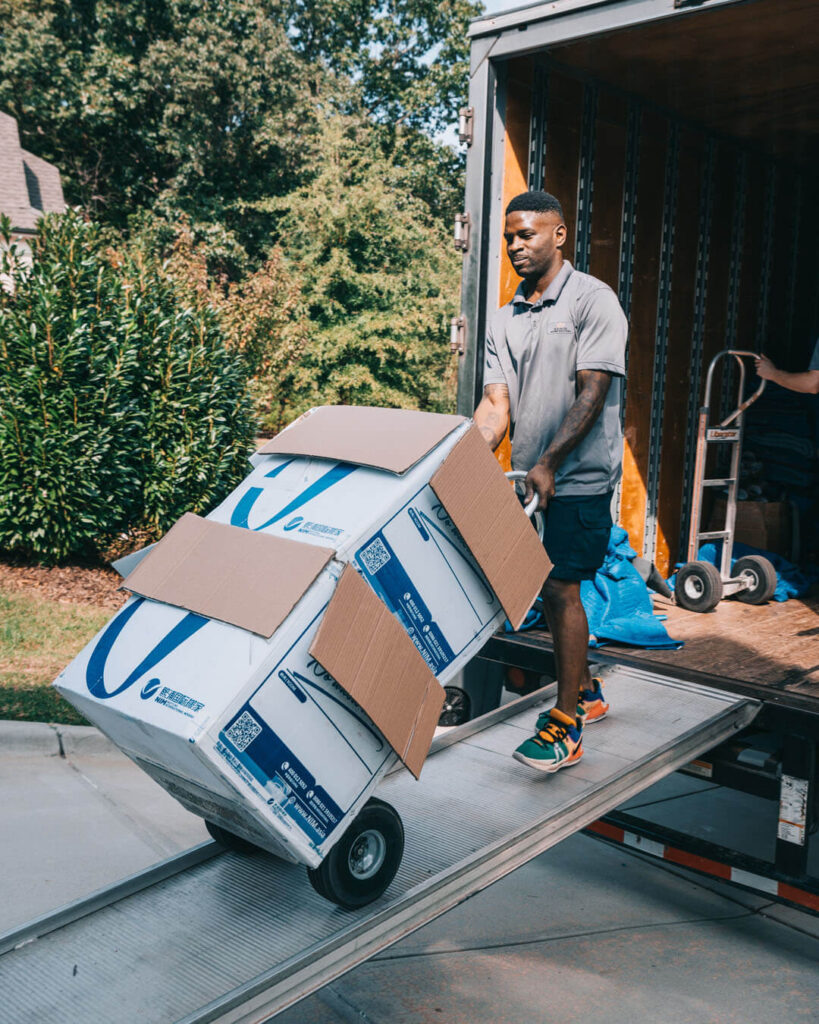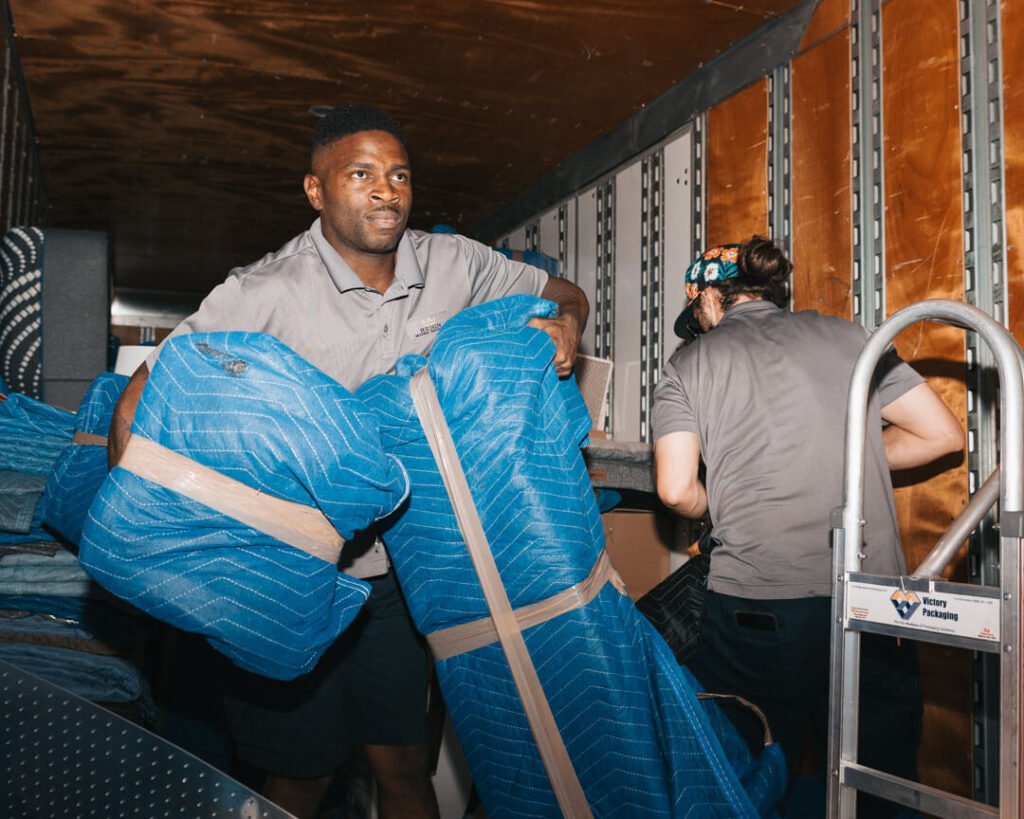When planning a move, one of the first decisions you’ll make is whether you’re tackling a local move or a long-distance move. While both types share some core steps, such as packing, scheduling, and organizing, the details can vary depending on the distance. From costs to planning strategies, understanding the key similarities and differences will help you better set the stage for your moving process.
Let’s break down what a local move entails, how a long-distance move differs, and what you need to know to plan your move effectively.
What is a Local Move vs a Long-Distance Move?
- Local Move: A local move typically covers short distances, usually within the same city or a nearby area—often less than 50 miles.
- Long-Distance Move: A long-distance move, also known as an interstate move or a cross country move, involves traveling much farther—usually 100 miles or more. It may even cross state lines, requiring compliance with federal regulations.
The types of moves you’re planning—whether local or long distance—will impact the cost, time, and logistics of the overall moving process.
Key Similarities Between Local and Long-Distance Moves
While distance is the main differentiator, several aspects of the moving process remain the same:
1. Moving Checklist is Essential
Whether you’re moving down the street or across the country, a solid moving checklist is key to staying organized.
- Create a timeline that includes packing, notifying utility companies, and scheduling a move date.
- Use the same organizational strategies, such as labeling boxes, separating essentials, and decluttering before packing.
2. Professional Moving Companies Offer Assistance
Both types of moves benefit from hiring professional moving companies. Full-service movers can:
- Handle the heavy lifting for large furniture and boxes.
- Provide packing supplies to protect your belongings.
- Pack and unpack if you opt for a complete moving service.
3. Costs Vary Depending on Several Factors
For both local and long-distance moves, the cost of your move depends on factors like:
- Amount of personal property.
- Special services (e.g., packing, disassembling furniture).
- Move date (weekends and peak seasons often cost more).
While local moving cost is often calculated hourly, a cost of long-distance move is typically based on weight and distance.
4. Planning is Crucial for Success
Regardless of the type of move, good planning minimizes stress. Start early, gather estimates, and research reputable moving companies.

Key Differences Between Local and Long-Distance Moves
Now, let’s dive into the areas where a local move and a moving long-distance experience differ.
1. Distance and Time
- Local Move: Typically completed in a single day. You can even make multiple trips if needed.
- Long-Distance Move: May take days or even weeks, depending on the distance and logistics. For a cross country move, delivery windows can vary.
Tip: If you’re wondering how to move long distance, start by creating a detailed timeline that accounts for travel time, stops, and delivery schedules.
2. Moving Costs
The cost of your move differs significantly based on the distance.
- Local Moving Cost: Charged by the hour, often including labor, truck fees, and packing supplies.
- Cost of Long-Distance Move: Based on the weight of your belongings and distance traveled. Some long-distance movers also factor in fuel, tolls, and overnight stays.
Tip: Always request a moving quote or moving estimates from at least three professional moving companies to compare rates. For long distances, flat-rate estimates are common.
3. Types of Moving Companies
Not all moving companies are equipped for long distance relocations.
- Local Movers: Specialize in quick, short-distance moves.
- Long Distance Moving Companies: Handle interstate moves and large relocations. They often have specific licenses and experience with cross-state regulations.
Tip: Verify that your movers are licensed for interstate moves if you’re crossing state lines.
4. Packing Strategies
Packing for a local move is often simpler than packing for a long-distance move.
- Local Move: Items can be packed more casually, as they won’t be in transit for long. You might even move delicate items yourself.
- Long Distance Move: Requires careful packing to ensure items survive long trips. Use quality packing supplies, such as sturdy boxes, bubble wrap, and packing tape.
Tip: For long-distance relocations, label boxes with room names and a list of contents to make unpacking easier at your new home.
5. Storage Options
Storage needs often arise with long-distance moves due to longer timelines and delayed arrivals.
- Local Move: Storage may not be necessary unless you’re downsizing or have a gap between homes.
- Long Distance Move: Consider renting short-term storage if your belongings will arrive before you can move into your new home.
Tip: Many long-distance moving companies offer storage-in-transit services for added convenience.
How to Plan for Your Move: Local vs Long Distance
Now that you understand the key differences, here’s a quick guide to help you plan your move:
For a Local Move:
- Book Early: Schedule movers ahead of time, especially for weekends.
- Declutter and Purge: Save time by moving only what you need.
- Ask for Help: Friends and family can often assist with packing or moving small items.
- DIY Option: Renting a truck can be cost-effective for short distances.
For a Long-Distance Move:
- Hire Professional Movers: Look for reputable long-distance movers to handle the job.
- Plan for Packing: Start early with durable supplies and pack room by room.
- Get Moving Quotes: Obtain multiple moving estimates to manage moving expenses.
- Keep Essentials Handy: Carry important documents, medications, and valuables with you during a long-distance trip.
The Bottom Line: Local Move vs Moving Long Distance
Whether you’re planning a local move or preparing for a moving long-distance journey, understanding the differences can help you plan more effectively. Local moves tend to be faster and more flexible, while long distance relocations require careful planning, strong organization, and reliable movers.
Regardless of the type of move, starting early, creating a moving checklist, and working with professional moving companies can simplify the process. With the right plan, your next move—no matter the distance—will be smooth, organized, and stress-free.
So, whether you’re going across town or across the country, take these insights and tackle your move with confidence!


